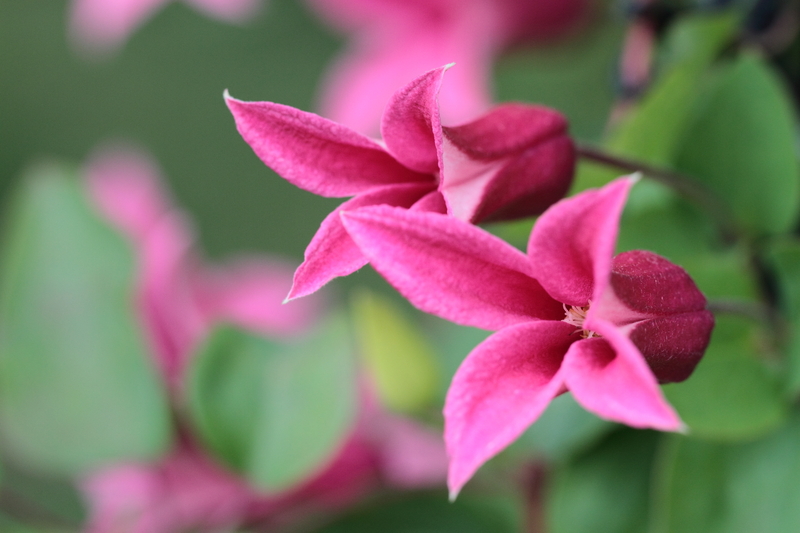3 Proven Tips for Effective Weed Management
Posted on 07/09/2025
3 Proven Tips for Effective Weed Management
Are you struggling to keep your garden or farm free from pesky weeds? Effective weed management is crucial for maintaining healthy plant growth, preserving soil nutrients, and ensuring high crop or garden yields. Weeds compete with desired plants, can harbor pests, and often diminish aesthetic appeal. Luckily, by applying science-backed strategies, you can take control of your landscape and achieve long-term weed suppression.
In this guide, we'll cover three proven tips for effective weed management using a mix of cultural, mechanical, and chemical approaches. These methods are appropriate for both home gardeners and agricultural professionals aiming to achieve the best weed control results possible.
Why Is Weed Management Important?
Before we dive into the actionable tips, let's quickly discuss why integrated weed management is so crucial. Weeds can severely reduce the productivity and health of crops and ornamental plants. By competing for light, water, and nutrients, they stunt growth, invite disease, and can ultimately lead to significant yield losses.
- Nutrient Competition: Weeds often have rapid growth cycles, stealing vital nutrients from your crops or flowers.
- Pest Harborage: Many unwanted plants provide shelter for insects and diseases that can further harm your cultivated plants.
- Reduced Crop Quality: Besides lowering yields, weed competition can diminish the size, color, or flavor of edibles and ornamentals.
- Increased Management Costs: Neglecting weed control early can lead to expensive remediation later in the season.
Now, let's explore the three top tips for effective weed control that every gardener or farmer should know.

1. Start With Preventive Cultural Practices
Build a Strong Foundation Against Weeds
Cultural weed management emphasizes creating an environment that favors your desired plants and naturally discourages weed establishment. Prevention is always better than cure, so the following proactive strategies are key for minimizing weed problems from the outset.
- Sow Vigorous, Dense Plantings: Use high-quality seeds or healthy seedlings and follow recommended spacing to encourage quick canopy closure. Dense foliage shades the soil, making it difficult for weed seeds to germinate and thrive.
- Rotate Crops: Diverse plantings disrupt weed life cycles. Crop rotation reduces the prevalence of specific weed species by changing growing conditions each year.
- Use Cover Crops: Plants like clover, rye, or buckwheat provide ground cover, suppressing weeds by outcompeting them for light and resources.
- Mulch Regularly: Mulching is one of the best weed suppression methods. Use organic mulches (wood chips, straw, compost) or landscape fabric to block sunlight and physically prevent weed growth.
- Tailor Watering Methods: Drip irrigation or targeted watering systems deliver moisture only to your crops, leaving weed seeds in dry zones where they are less likely to sprout.
By integrating preventive cultural practices, you can greatly reduce the number of weeds that ever emerge. This not only minimizes labor but also helps maintain soil health and ecosystem balance.
2. Master Mechanical Weed Control Methods
The Power of Physical Removal and Disruption
Mechanical weed management involves the direct removal or destruction of weeds through manual labor or machinery. While sometimes labor-intensive, these practices offer immediate results and, when timed well, can keep weed populations low all season.
- Regular Hoeing and Hand-Pulling: For small gardens or raised beds, regular hoeing or pulling weeds by hand prevents weeds from flowering and seeding. Always pull weeds when the soil is moist for easy removal, ensuring you get the entire root system to prevent regrowth.
- Flame Weeding: Great for driveways and pathways, flame weeders use heat to kill weed tissue on contact without disturbing the soil structure. This technique is effective for annual weeds and young seedlings.
- Soil Solarization: Involves covering moist soil with clear plastic during hot months, trapping solar heat that 'cooks' weed seeds and soil pathogens. This method can significantly reduce the weed seed bank before planting.
- Cultivation and Tillage: In larger areas, shallow cultivation with tools or machinery disrupts weed growth and buries seedlings. Take care not to till too deeply, as this can bring dormant weed seeds to the surface.
Mechanical methods offer both chemical-free and organic solutions for effective weed control. By combining several techniques, you'll develop a robust management routine, reducing the need for herbicides or intensive interventions.
3. Apply Herbicides Responsibly and Strategically
When and How to Use Chemical Weed Control Safely
While integrated weed management emphasizes prevention and mechanical approaches, there are times when using herbicides is necessary--especially for invasive or persistent perennial weeds. Here's how to ensure chemical weed suppression is both effective and environmentally responsible:
- Identify the Weed Species: Different weeds respond to different herbicides. Proper identification allows you to select the right product and minimize unnecessary applications.
- Use Selective Herbicides: Choose products that target broadleaf weeds or grasses, depending on your crop type, to minimize damage to desired plants.
- Spot Treat, Don't Blanket Spray: Apply herbicides only where weeds are present, using spot applications to reduce environmental impact and potential resistance.
- Adhere to Timing Recommendations: Apply pre-emergent herbicides before weed seeds germinate or post-emergent products when weeds are actively growing. Avoid windy or rainy days to prevent drift and runoff.
- Follow All Label Instructions: Proper mixing, wearing protective gear, and respecting re-entry intervals are essential for safe and effective use.
Remember: chemical control should be used as part of a broader integrated management plan. Over-reliance can lead to herbicide-resistant weeds and environmental risks. Combining cultural, mechanical, and chemical methods provides the most sustainable and effective weed suppression.
The Importance of Integrated Weed Management (IWM)
Effective weed management is best achieved when multiple strategies are used in concert. This Integrated Weed Management (IWM) approach reduces the risk of resistance, protects beneficial insects and microbes, and builds a healthier, more resilient growing environment.
Top Benefits of Integrated Weed Control:
- Reduced chemical inputs for safer, eco-friendly gardening or farming
- Long-term weed suppression with less labor and cost over time
- Healthier soils and beneficial soil biology
- Improved crop or garden yields and quality
Proven Weed Management Tips at a Glance
To summarize, here are the three proven tips for effective weed management:
- Start Preventive Cultural Practices: Plant densely, rotate crops, and mulch consistently to discourage weeds from taking hold.
- Use Mechanical Methods: Regular hoeing, hand-pulling, and selective tillage physically eliminate weeds before they become a problem.
- Apply Herbicides Strategically: Use chemicals only when necessary, selecting the right product, timing, and method to minimize impact and maximize results.
Bonus: Common Weeds and How to Identify Them
Know Your Enemy
Understanding which weeds you're dealing with is essential for precise and effective control. Here are a few of the most widespread garden and field weeds:
- Dandelion (Taraxacum officinale): Perennial broadleaf weed with bright yellow flowers and deep taproots. Remove early before seeds disperse.
- Crabgrass (Digitaria spp.): Annual grassy weed that thrives in thin lawns or bare soil. Control by overseeding lawns and using pre-emergent herbicides.
- Chickweed (Stellaria media): Cool-season annual forming dense mats. Hand-pull before flowering; mulch well to prevent spread.
- Nutsedge (Cyperus spp.): Difficult-to-control perennial weed common in lawns and gardens. Remove tubers and use grass-safe selective herbicides.
Proper weed identification ensures better management decisions and reduces the risk of accidentally harming non-target species.

Seasonal Weed Management Calendar
Staying ahead of weeds means planning your actions according to the season:
- Spring: Mulch garden beds, seed cover crops, and apply pre-emergent herbicides before weeds emerge.
- Summer: Monitor and remove young weeds mechanically. Use targeted herbicides if necessary.
- Fall: Remove perennial weeds, till soil lightly, and plant overwintering cover crops to block winter weed growth.
- Winter: Review last year's weed issues and plan rotations or new prevention strategies for next year.
Conclusion: Take Control with These Expert-Backed Weed Management Strategies
Effective weed management doesn't have to be overwhelming. By blending cultural, mechanical, and chemical tools, you can enjoy weed-free lawns, gardens, or fields--while promoting sustainability and reducing effort in the long term.
Remember, consistent vigilance is key. Monitor your landscape regularly, adapt your strategy to changing conditions, and always favor integrated weed management (IWM) for the best results.
If you found these 3 proven tips for effective weed management useful, share this article with fellow gardeners and growers. For more expert advice and seasonal tips, don't forget to bookmark this page or subscribe for updates!
Read More:
- How to Make Organic Weed Killer at Home
- The Best Mulching Techniques for Every Garden
- Integrated Pest and Weed Management Strategies
Stay proactive, stay informed, and enjoy a healthier, weed-free growing season!

